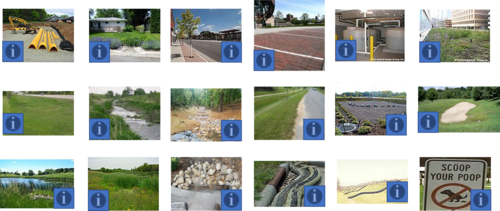
Main Page
Information: We have begun adding hover box (mouse over) text so users can see the contents on a particular page. Hover your mouse over the bolded text See contents next to each link below to see the contents on the linked page.
Information: Taking advantage of the wiki technology, we continue to update this manual as resources allow. We continue to value your input. If you have comments or suggestions on the format please send them to us using the Help Improve this Page box at the bottom of most pages or send an email to Paula Kalinosky at the MPCA.
Welcome to the Minnesota Stormwater Manual website. This website was developed using Mediawiki, a wiki application that allows for easy editing and that has powerful search abilities. See Introduction to the wiki for more information.
Contents
- 1 Introduction to the Minnesota Stormwater Manual
- 2 Stormwater concepts and stormwater management
- 3 Stormwater issues
- 4 Stormwater control practices (Best Management Practices)
- 5 Regulatory, permitting
- 6 Models, calculations, methodologies, pollutant removal, credits
- 7 Case studies and examples
- 8 Communications and outreach
- 9 Stormwater research and education
- 10 Reference
- 11 Documents
Introduction to the Minnesota Stormwater Manual
Stormwater concepts and stormwater management
- General stormwater information
- Stormwater treatment concepts - See contents
- Alleviating compaction from construction activities
- Liners for stormwater management
- Green Stormwater Infrastructure (GSI) and sustainable stormwater management
- Information on soil - See contents
- Compost and stormwater management

The Interstate Technology and Regulatory Council (ITRC) released a new guidance document called Stormwater Best Management Practices Performance Evaluation.
Stormwater issues
- Stormwater pollutants - See contents
- Stormwater infiltration - See contents
- Protection and restoration of receiving waters
- Minnesota specific issues - See contents
- Stormwater and landscape guidance for solar farms and solar projects
- Guidance for managing sediment and wastes collected by pretreatment practices
- Management of soil and engineered media removed from bioretention basins and similar stormwater treatment devices
Stormwater control practices (Best Management Practices)
By type
- Construction stormwater Best Management Practices - See Contents
- Pretreatment practices - See contents
- Post-construction practices - See Contents
- Structural practices - See Contents
- Stormwater and rainwater harvest and use/reuse
- Non-structural practices - See contents
By treatment mechanism
- Pretreatment practices - See contents
- Filtration practices - See contents
- Infiltration practices - See contents
- Sedimentation practices - See contents
- Chemical practices - See Contents
Regulatory, permitting
- Construction stormwater: Permit, documents, fact sheets
- Municipal stormwater: Permit, documents, fact sheets
- Industrial stormwater: Permit, documents, fact sheets
- Regulatory information
- Additional regulatory information
Models, calculations, methodologies, pollutant removal, credits
- Minimal Impact Design Standards
- Minnesota Pollution Control (MPCA) Simple Estimator
- Stormwater models, calculators and modeling
- Stormwater pollutant removal, stormwater credits
- Unified sizing criteria
Case studies and examples
Communications and outreach

Training and webinar schedule. Image: Microsoft stock image
- Stormwater newsletters
- Stormwater blogs
- In the news
- Stormwater Manual webinars
- MIDS calculator videos
- MIDS training and workshop materials
- Stormwater videos
- Training and webinar schedule
- Descriptions of training and webinar events
- Minnesota Stormwater Manual email Updates
Stormwater research and education
- Stormwater education
- Stormwater research
- University of Minnesota St. Anthony Falls Stormwater Research
Reference
- Minnesota Stormwater Manual photo galleries
- Tables
- Plant information
- Images, CAD drawings: Includes links to CAD drawings, photos, schematics, graphs, and other images
- Checklists
- Links to other stormwater manuals
- Miscellaneous information: Contains references, forms, links, issue papers
- Acronyms
- Symbols
- Glossary (definitions)
- BMP terminology
- Conversion units
- References from the original manual. NOTE: Newer reference lists are associated with topics on individual pages in the manual.
- Protecting Water Quality in Urban Areas: Best Management Practices for Dealing with Storm Water Runoff from Urban, Suburban, and Developing Areas of Minnesota
- Watershed projects and virtual tours
Documents
- Technical support: Contains a variety of technical information used in developing the Manual
This page was last edited on 18 December 2024, at 12:41.

